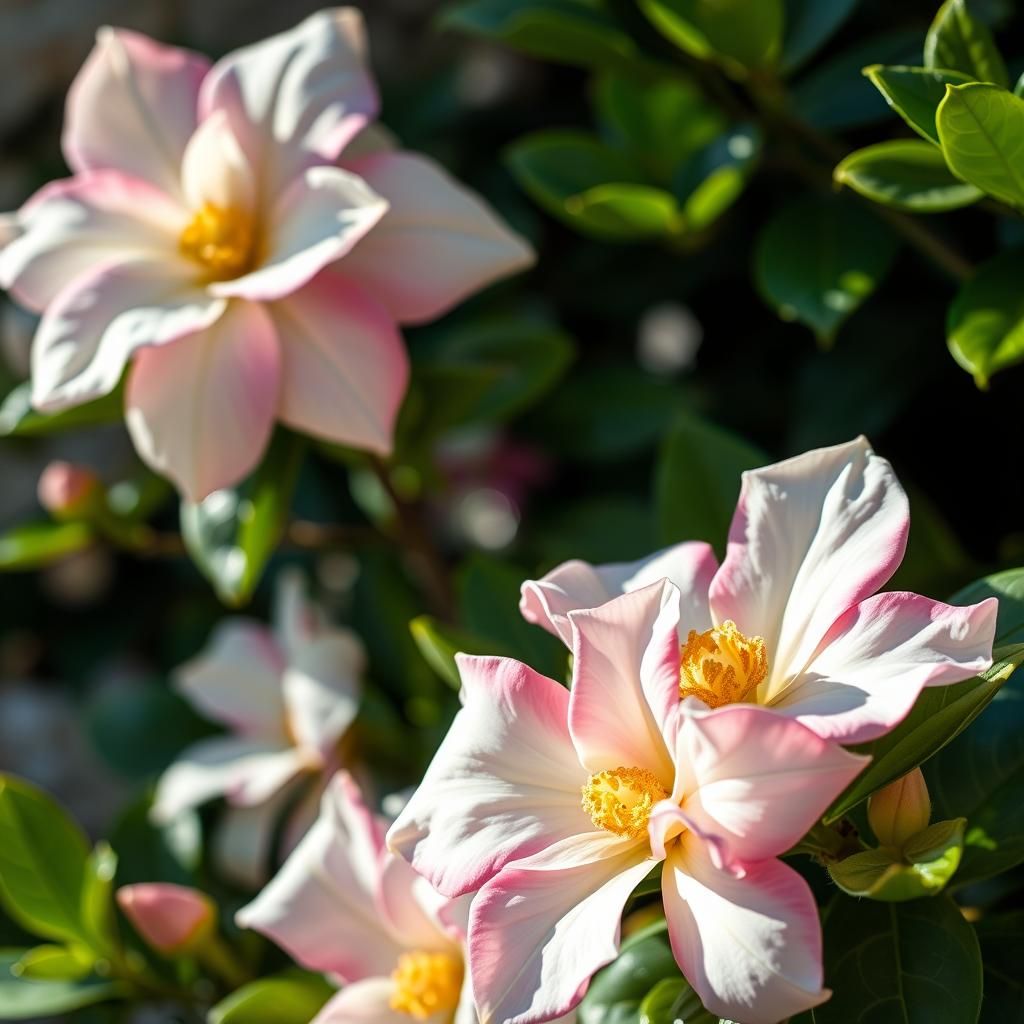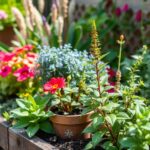Do Gardenias Like Sun or Shade? Discover the Best Lighting for Vibrant Blooms

Gardenias are beloved for their fragrant blooms and glossy green foliage, making them a popular choice in gardens and landscapes. However, one crucial aspect of their care often raises questions: do gardenias prefer sun or shade? Understanding the ideal lighting conditions for these stunning plants is essential for promoting robust growth and vibrant flowers. In this article, we will explore the best lighting options for gardenias, examining how sunlight exposure affects their health and blooming potential. Whether you’re a seasoned gardener or a newcomer, discover how to provide the perfect environment for your gardenias to thrive.
Do Gardenias Prefer Sun or Shade?
Gardenias thrive best in partial shade, receiving about 4 to 6 hours of direct sunlight each day. While these fragrant flowers can tolerate some sun, too much direct exposure can lead to leaf scorch and hinder their overall growth. Ideal conditions would involve a carefully balanced mix of sunlight and shelter, such as being planted near taller plants or structures that provide a bit of protection from the harsh afternoon rays. Ensuring that the soil remains moist and rich in organic matter will also support their growth in a partially shaded environment.
Ideal Sunlight Conditions for Gardenias
Gardenias do best with indirect sunlight. Planting them in an area that receives bright but filtered light can encourage healthy growth and maximize flower production. Areas that face southeast are optimal because they receive morning sun, which is less intense, giving gardenias the warmth they need without the risk of excessive heat stress. Therefore, understanding the sunlight needs of gardenias is crucial for maintaining their beauty and vigor in the garden.
Effects of Too Much Sunlight
When gardenias are exposed to excessive sunlight, they can suffer from a variety of problems including leaf burn and dried out leaves. The intense heat can lead to wilting and deter the plant from blooming, ultimately compromising its health. It's important to monitor gardenias closely during hotter months to ensure they are adequately watered and not placed in areas that receive full sun exposure for an extended period.
Benefits of Shade for Gardenias
Providing gardenias with shade allows them to maintain moist conditions in the soil and prevents the rapid evaporation of water, which is crucial for their survival. A shaded environment tends to discourage pests and diseases too, as many pests thrive in full sun conditions. Thus, incorporating elements such as other plants or garden structures to create shaded areas can significantly enhance the health and vitality of gardenias.
See also:
Watering Needs in Sun vs. Shade
The watering needs of gardenias vary depending on their exposure to sunlight. In sunny areas, gardenias require more frequent watering to keep the soil consistently moist, while those in shaded areas may need less frequent watering. Maintaining a balanced approach to watering according to their sun exposure is essential for preventing root rot and ensuring that gardenias receive adequate hydration without becoming overwatered.
Other Factors Influencing Gardenia Growth
Apart from sunlight preferences, other factors such as soil type, humidity, and temperature play significant roles in gardenia growth. They prefer acidic soils rich in organic matter, and they thrive in warmer, humid environments. Ensuring that gardenias have the right surrounding conditions, including proper mulch to retain soil moisture, can help them flourish regardless of their sun exposure.
| Factor | Sun Conditions | Shade Conditions |
|---|---|---|
| Watering Frequency | Higher | Lower |
| Leaf Condition | Risk of leaf burn | Healthier leaves |
| Flower Production | May decrease | More consistent |
| Soil Moisture | Dries out quickly | Stays moist longer |
| Pest Activity | Higher | Lower |
Understanding Gardenia Light Requirements for Optimal Growth
Gardenias thrive best in bright, indirect sunlight, which helps them produce the vibrant and fragrant blooms they are known for. While they can tolerate some direct sunlight, particularly in the morning, too much exposure, especially during the peak of the day, can scorch their delicate leaves and inhibit growth. Ideally, positioning gardenias in a location that receives a mix of sun and shade, such as near a window with filtered light or under a tree that provides some cover, can create the perfect balance to support their health and flowering potential.
Ideal Sunlight Conditions for Gardenias
Gardenias ideally prefer bright, indirect light for a significant portion of the day. While they can tolerate some early morning sun, exposure to harsh afternoon rays may lead to leaf burn and diminished bloom quality. To ensure flourishing plants, consider placing them in a spot where they receive ample filtration, mimicking their natural habitat, which often features dappled light.
Effects of Shade on Gardenia Growth
While gardenias can survive in shadier conditions, prolonged periods without sufficient light can result in weak growth, fewer blooms, and overall decline in plant health. While they may adapt to partial shade, they will struggle to produce the lush foliage and fragrant flowers that are characteristic of healthy gardenias. Therefore, avoid placing gardenias in full shade settings.
See also:
The Role of Temperature in Photoperiod
Temperature plays a crucial role in the gardenia's response to light. These plants prefer warm temperatures and tend to thrive when exposed to consistent daylight hours, alongside moderate nighttime temperatures. Ideally, a minimum of 10 hours of quality light each day helps to stimulate the bloom cycle and promotes strong, healthy growth.
Signs of Improper Lighting
Recognizing signs of improper lighting can help you address potential issues before they become serious. If your gardenias exhibit yellowing leaves, stunted growth, or produce few flowers, it may indicate they are not receiving enough light. Alternatively, burned leaf edges or dropping petals could suggest too much direct sun exposure, necessitating a reevaluation of their positioning.
Seasonal Adjustments for Optimal Light
As seasons change, so do light conditions. In winter months, when daylight is limited, gardenias may require temporary relocation to maximize their access to available sunlight. Observing how light shifts through your space can inform adjustments that enhance their blooming potential, particularly during shorter days where less natural light is available.
Questions from Our Readers
Do gardenias prefer full sun or partial shade?
Gardenias typically prefer partial shade rather than full sun. While they can tolerate some sun, excessive direct sunlight can cause their leaves to scorch. It's best to provide them with filtered light or morning sun with afternoon shade for optimal growth.
Can gardenias thrive in full shade?
Gardenias can survive in full shade, but their growth and flowering may be limited under such conditions. They usually require some level of light to produce their fragrant blooms and maintain healthy foliage, so finding a balance is essential.
See also:
What is the best location to plant gardenias?
The best location to plant gardenias is in an area that receives morning sunlight and afternoon shade. This placement provides them with enough light to thrive while also protecting them from the harshest rays of the sun, promoting healthy growth and vibrant flowers.
How do I care for gardenias in different light conditions?
For gardenias in sunny spots, ensure they are watered regularly to prevent drying out, while those in shadier locations may require less frequent watering. Adjusting your fertilization schedule can also help, as gardenias in lower light conditions may need less nutrient input compared to those basking in sunlight.

If you want to read more articles like Do Gardenias Like Sun or Shade? Discover the Best Lighting for Vibrant Blooms, we recommend you check out our Landscaping category.
Leave a Reply
Related Articles